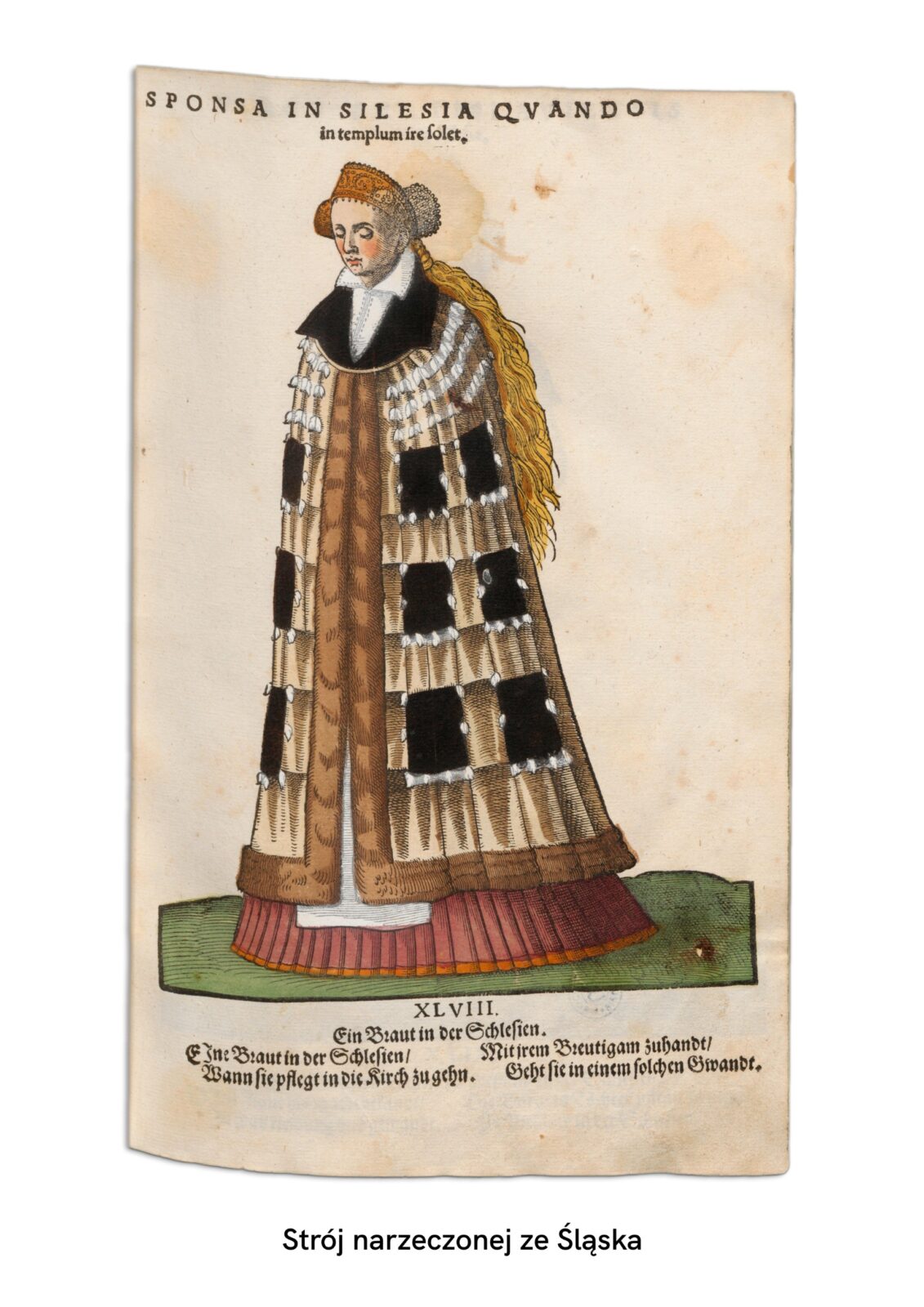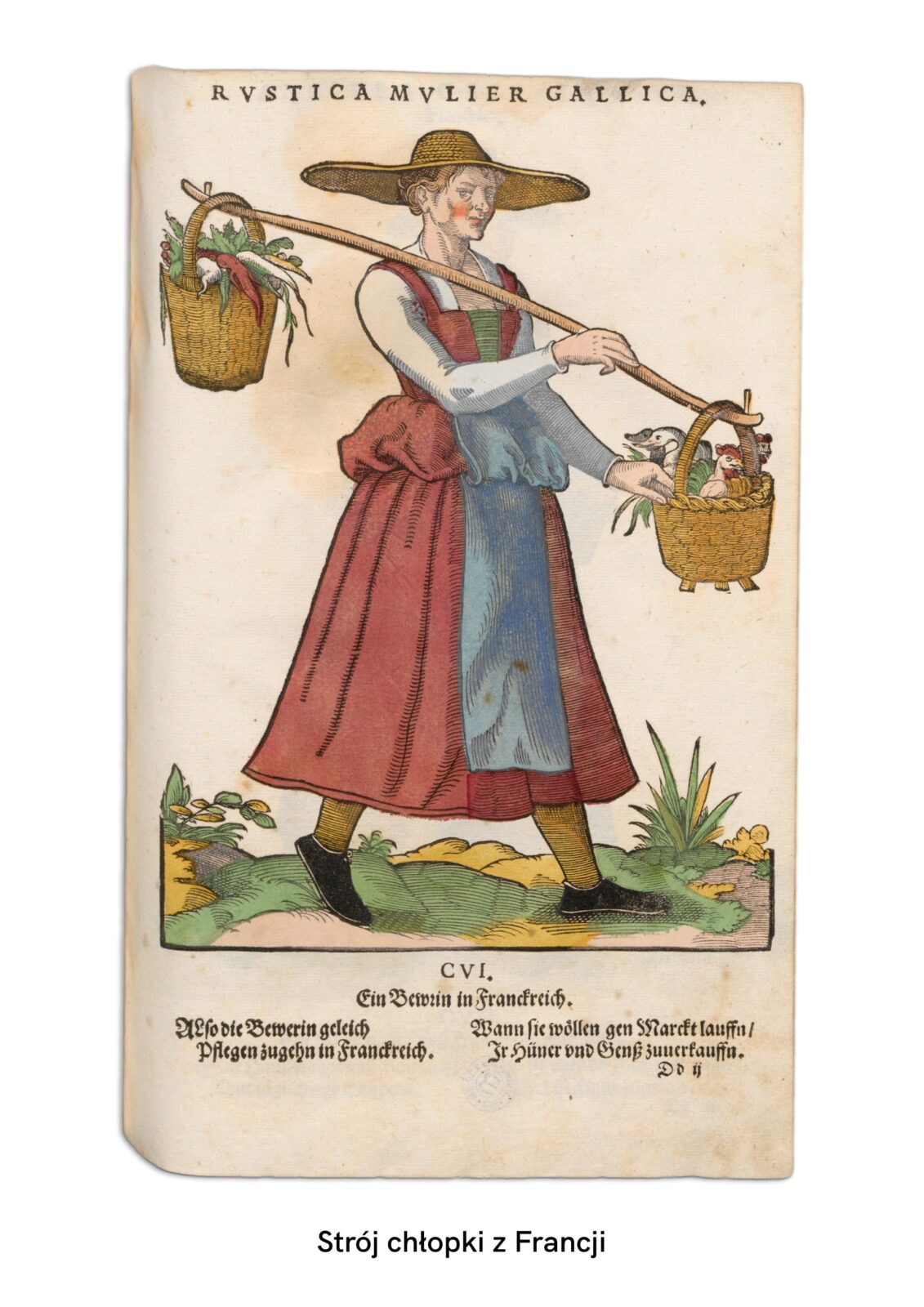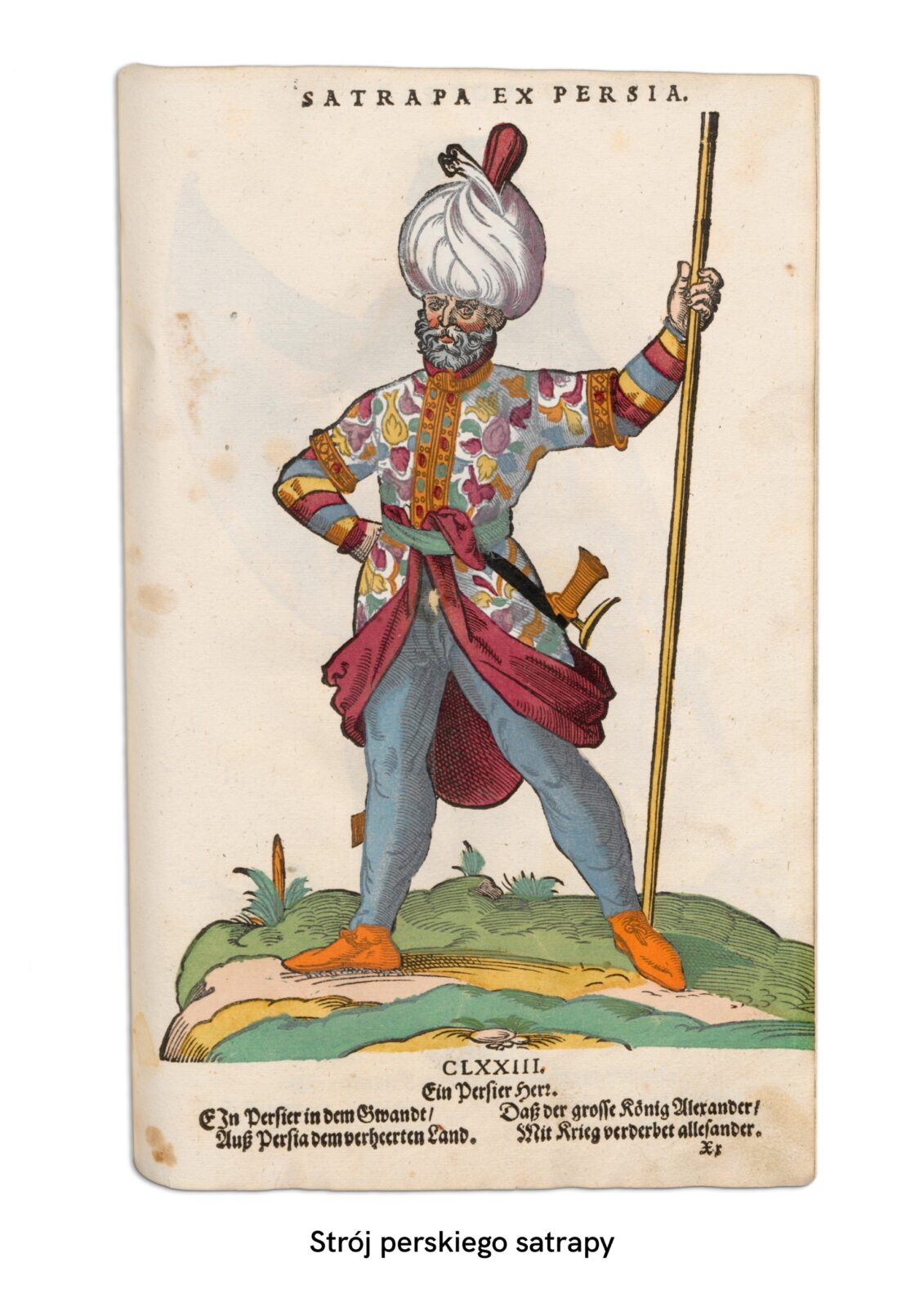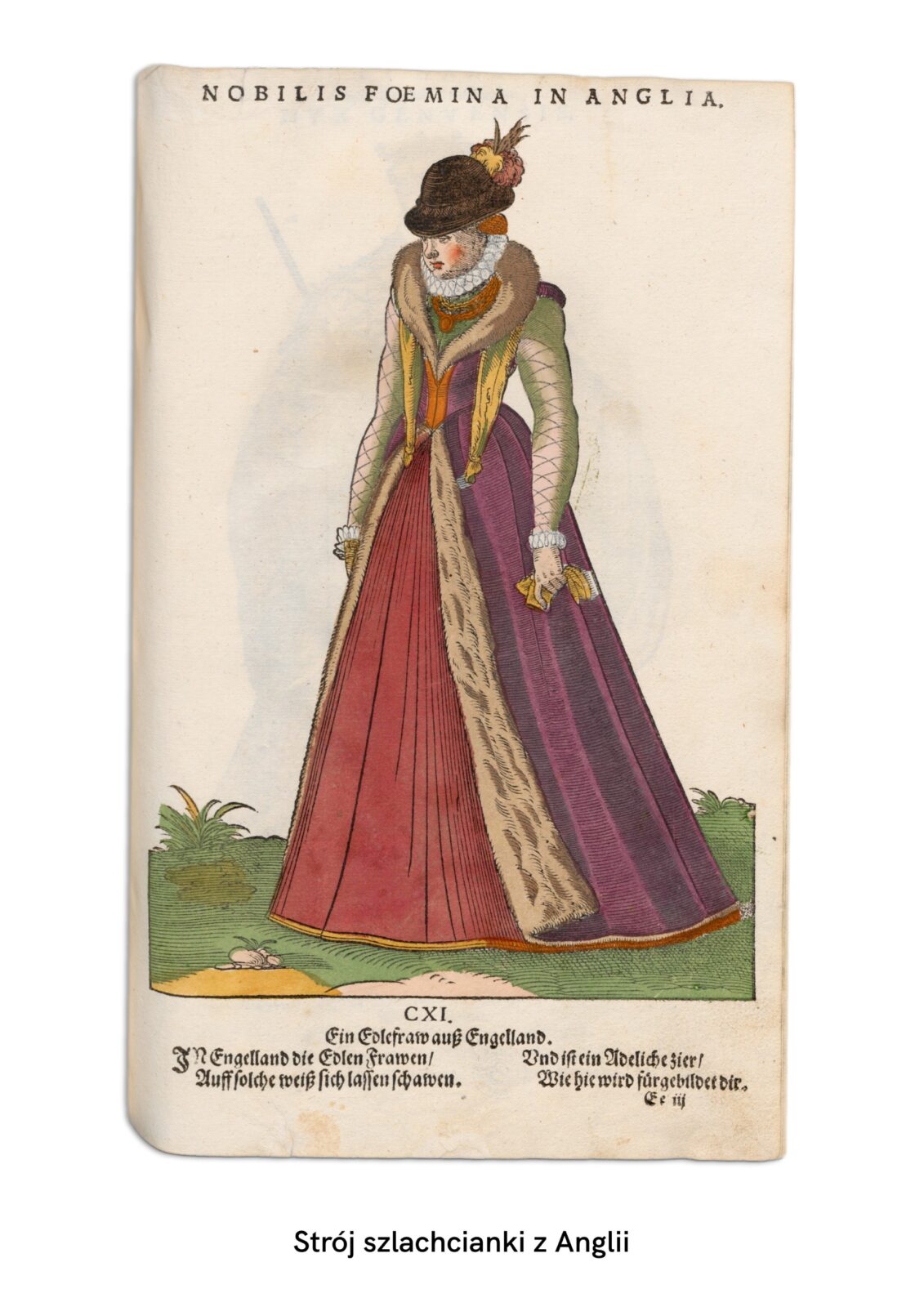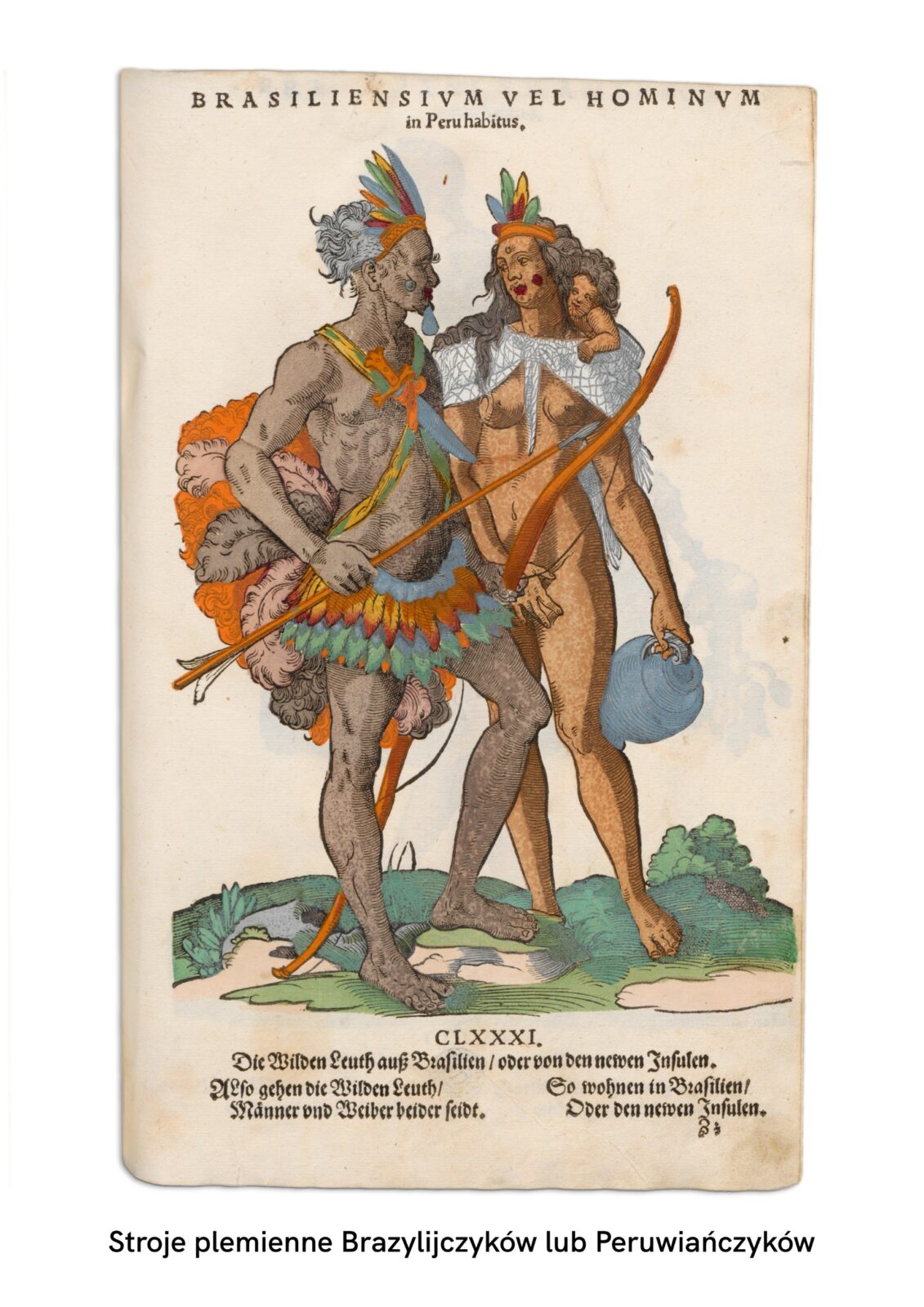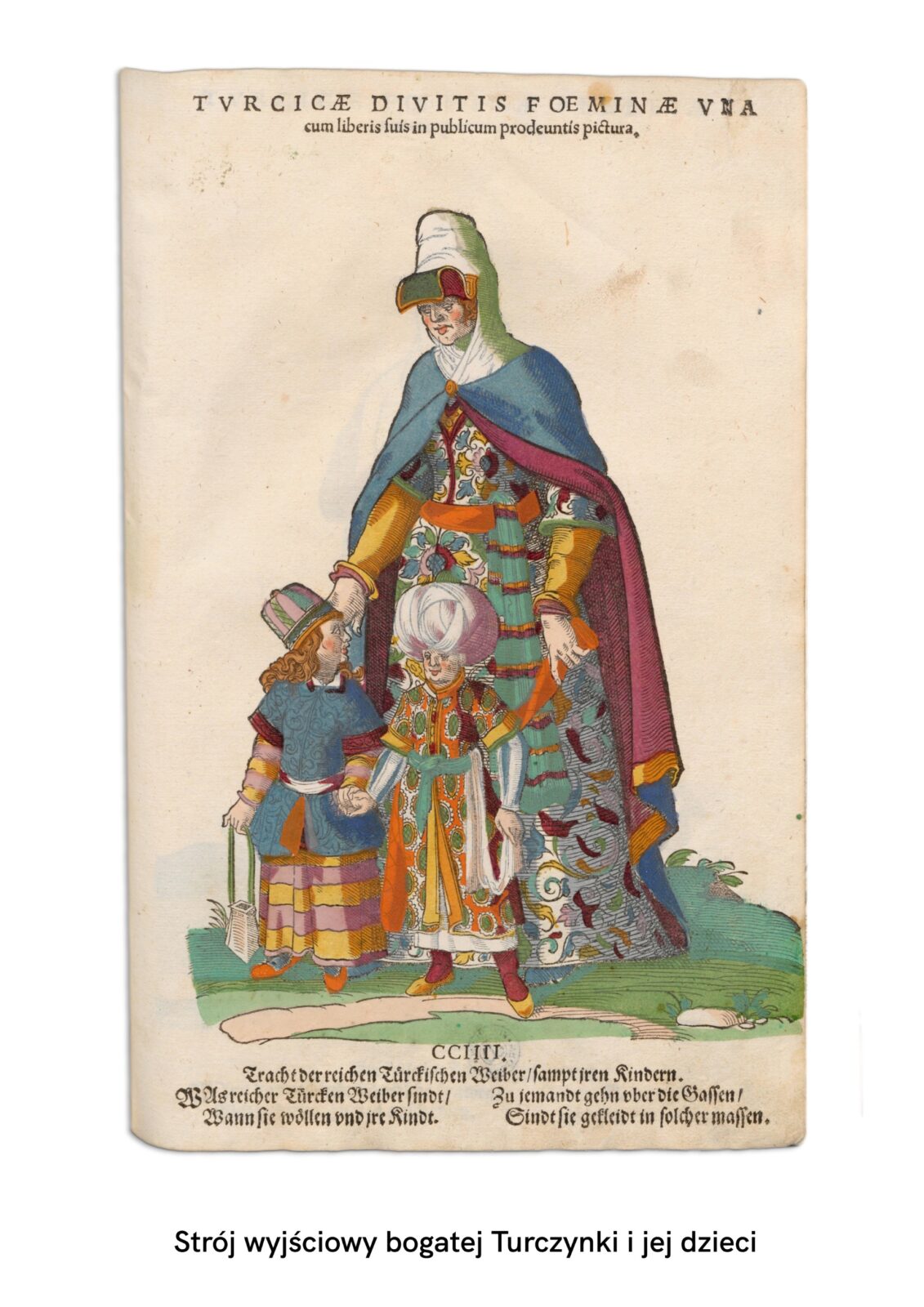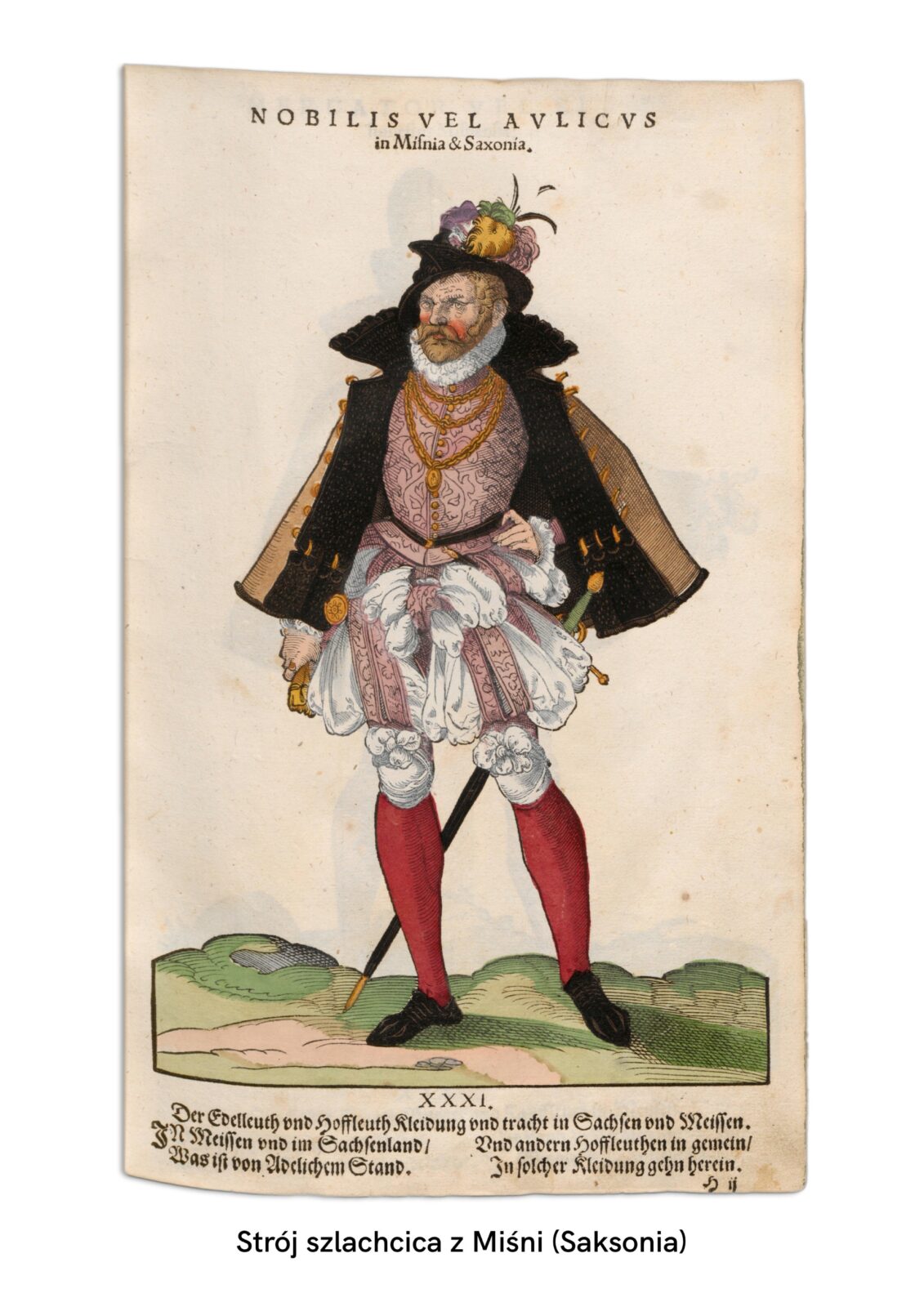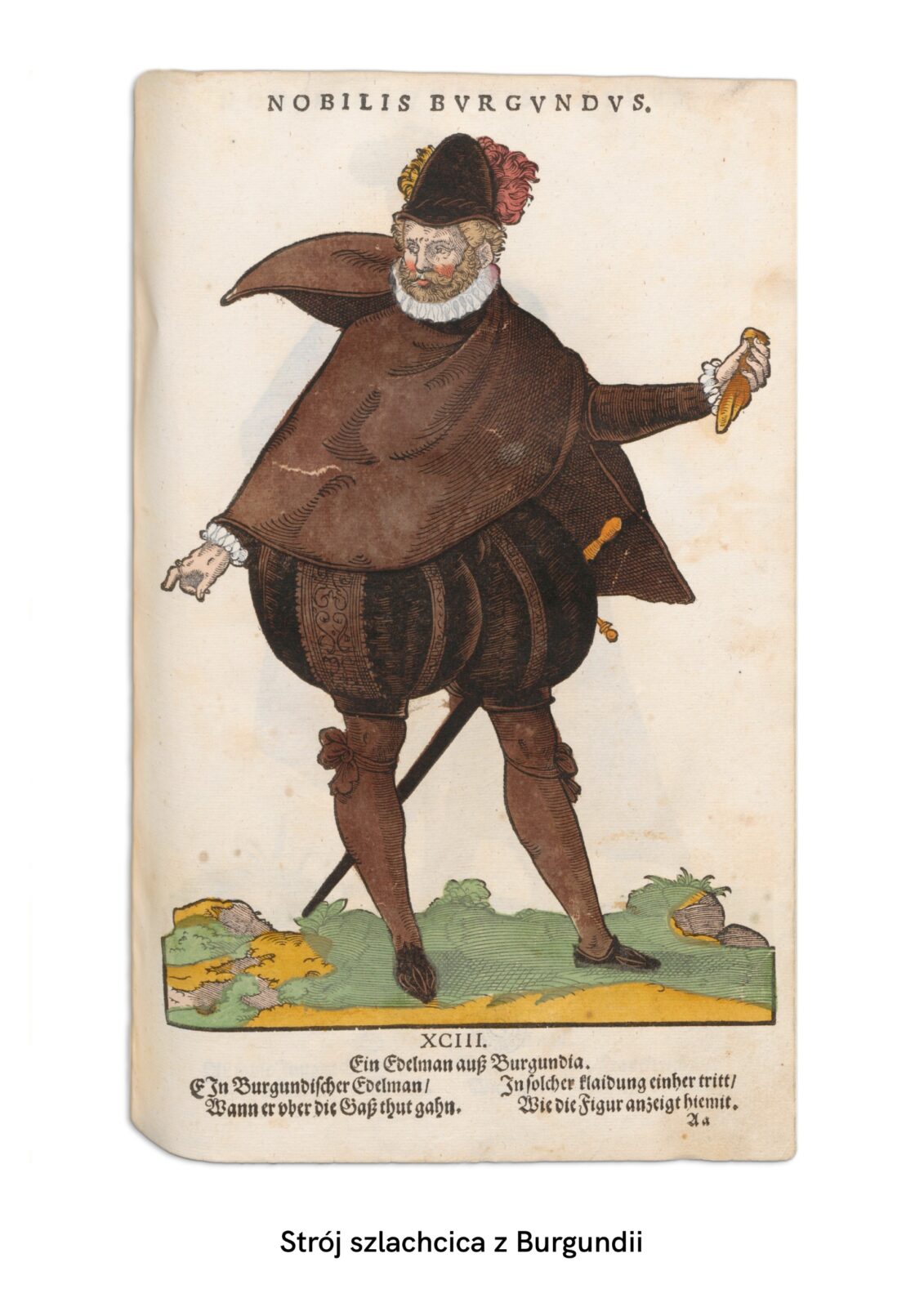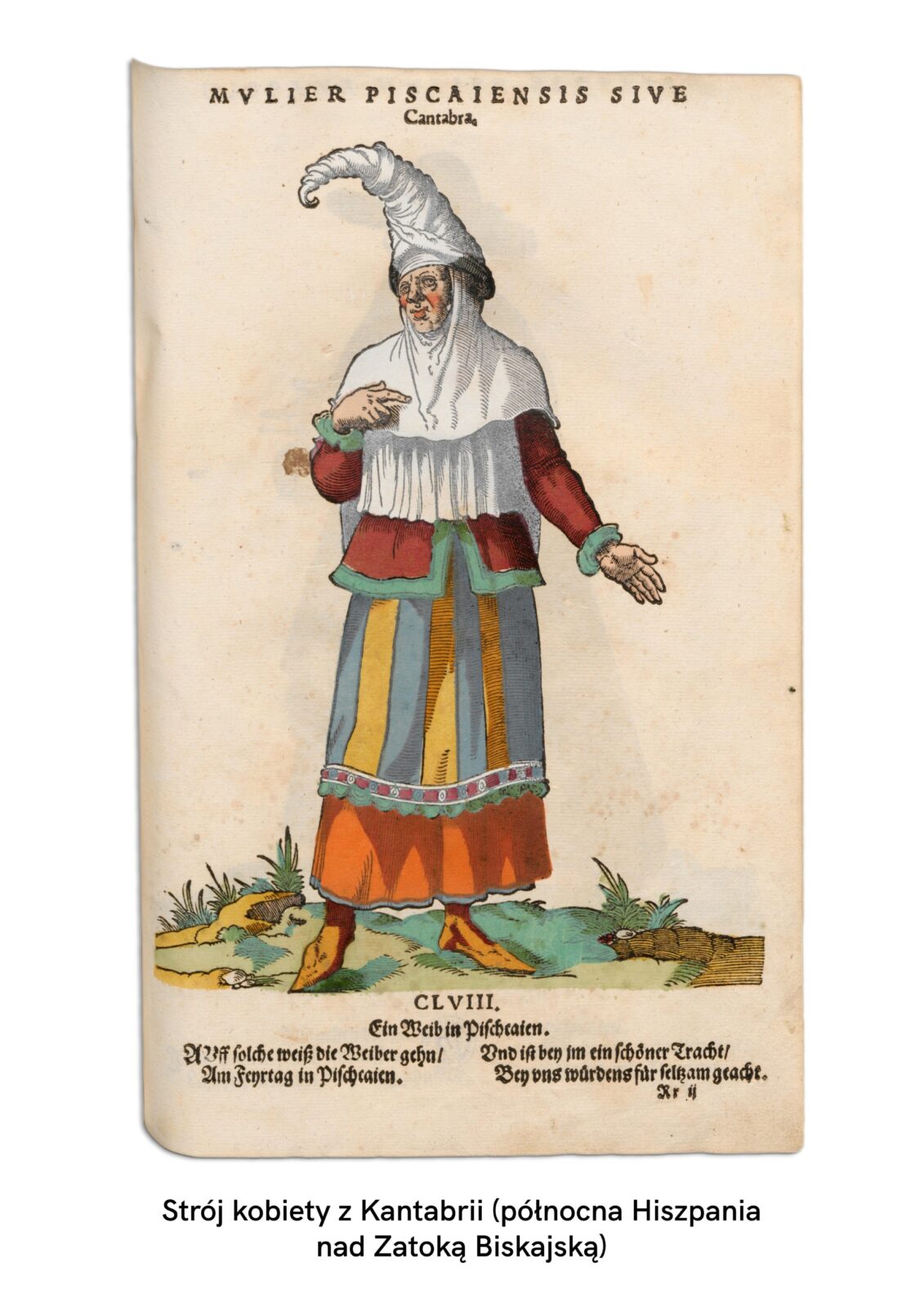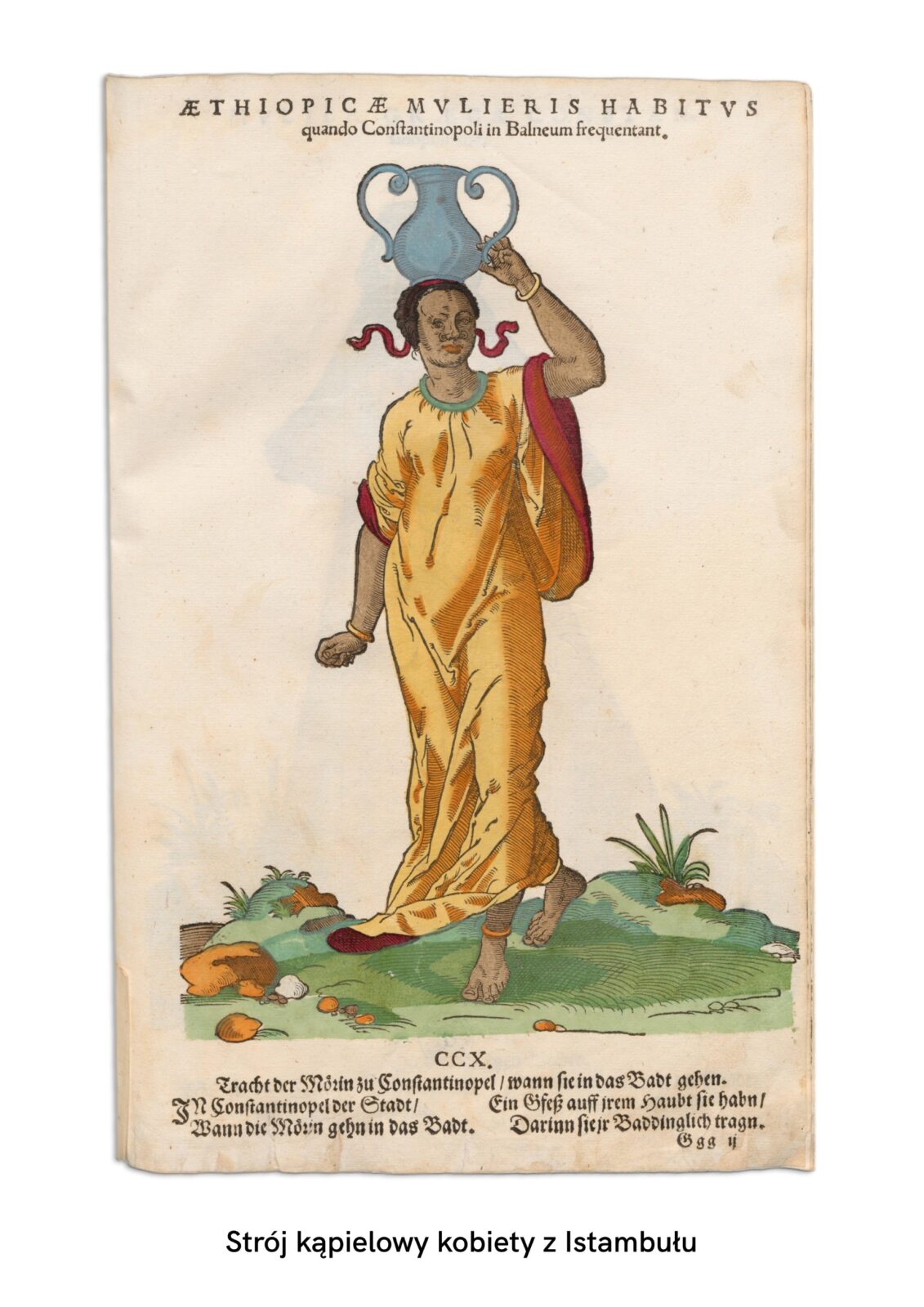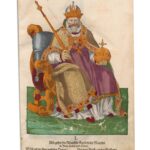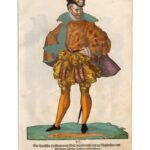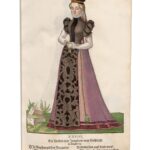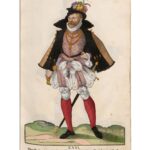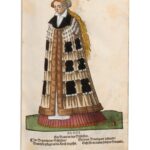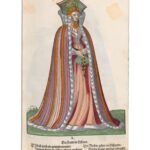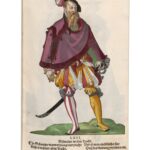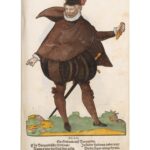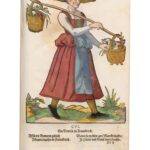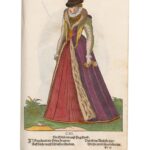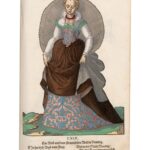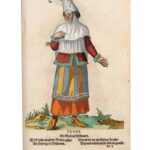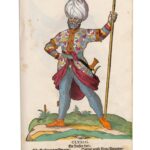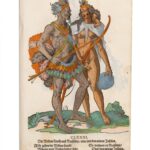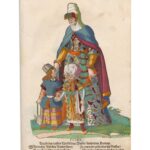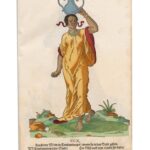
History written in fashion. Exhibition at the University Library
Join us for an exhibition on fashion during the Renaissance. In the collection of the Old Prints Department of the University Library in Wrocław is a work published in 1577 by Hans Weigl: Habitus praecipuorum populorum tam virorum quam foeminarum singulari arte depicti; Trachtenbuch: Darinn fast allerley vnd der fürnembsten Nationen, die heutigs tags bekandt sein, Kleidungen, beyde wie es bey Manns vnd Weibspersonen gebreuchlich, mit allem vleiß abgerissen sein, sehr lustig vnd kurtzweilig zusehen, sygn. OSD 406987. The old print comes from the Library of Prince George Rudolf in Legnica. Hans Weigel (1549-1578) was a graphic artist, book illustrator, but most importantly a printer and publisher from Nuremberg. His published work was very popular in the 16th century, but interestingly, it still enjoys great popularity, which is undoubtedly due to the author of the woodcuts included in it: Jost Amman (1539–1591). The artist was originally from Switzerland, but created in German countries. He became known as a talented graphic designer, illustrator, as well as painter.
Jost (Jos, Jobst) Amman (Ammann, Ammon) was born in Zurich as the son of Johann Jakob Amman, a canon, professor of rhetoric and classical languages at the Collegium Carolinum in Zurich, and his third wife Elisabeth Egger. Little is known about his personal life other than the fact that he moved to Nuremberg in 1560, where he took citizenship and lived until his death. He was an extremely prolific and industrious artist, and is credited with the authorship of some 1,500 engravings made using various techniques. Amman probably trained in the workshop of Virgil Solis (1514-1562), and then succeeded him as chief illustrator with the Frankfurt publisher Sigmund Feyerabend (1528-1590) after his death. They collaborated on the publication of more than 50 prints made mainly in woodcut, but also in copperplate. In addition to illustrations, Amman also designed other typographic elements, including decorative borders and initials. His work was featured in a print by Wenzel Jamnitzer: Perspectiva corporum regularium, 1568. He also produced a series of engravings depicting the kings of France with short biographies, which was published in Frankfurt in 1576, and the Panoplia Omnium Liberalium Mechanicarum et Seden-tariarum Artium Genera Continens, containing 115 plates. He was also the author of woodcuts for a Bible published in Frankfurt by Sigmund Feierabend and for a topographical overview of Bavaria by Philipp Apian. He probably also created oil and glass paintings. In the 16th century, his works were extremely popular. After Amman’s death in 1591, they were met with much criticism. However, this did not affect the fact that they continued to be copied and reused. They greatly influenced artists such as Peter Paul Rubens and Rembrandt van Rijn.
The work of Hans Weigl: Habitus praecipuorum populorum is part of a series of so-called Trachtenbücher (Kostümbücher), books of an encyclopedic nature showing clothing and attire, mainly for women, typical of various countries, cities, regions and even continents. Costumes were presented from among different social strata: from the pope, emperor, king, through the costumes of aristocrats and townsfolk, to the clothes of peasants, coachman, doctor. The material has been arranged according to continents, and within them – countries and regions. Books containing engravings with depictions of costumes and their descriptions were extremely popular in Western Europe at the end of the 16th and beginning of the 17th centuries, a period when profound changes were taking place in the mentality of European society. Undoubtedly, geographical discoveries and the associated development of cartography and general knowledge of the world played a huge role. The accounts and descriptions of travelers were closely followed. Illustrated travel albums and editions of collections of city views, maps and plans have become very popular. More and more time and attention was devoted to collecting collections of beautiful and artful objects, but also strange, peculiar and unfamiliar ones. These were the so-called Kunstkammer (Wunderkammer), or cabinets of curiosities. Although they were established in an earlier period, it was not until the 16th century that they truly flourished. The collection was enriched with works of art, numismatics, minerals, but also unusual, sometimes even curiosity items. They were supplied by trading companies from all over the world. Books that popularized and systematized Renaissance society’s knowledge of distant countries, societies, customs were also part of such collections. The dress books reflected the growing interest in clothing and fashion during the Renaissance. Besides, images from costume books were often copied in travel albums, stammbuchs (sometimes even pasted fragments of engravings or copies of drawings), or on the borders of maps. Europeans believed that by learning about the costume, the clothing characteristic of a particular region, they were also acquainting themselves with the customs and social relations there.
It should also be taken into account that in the 16th century there were regulations precisely regulating the issue of clothing. Ordinances, the so-called leges sumpturiae, which included laws on clothing, were widely used as an important element of social control to maintain the existing social order and emphasize class, state or professional hierarchies. The regulations even specified what clothes were appropriate for family celebrations (engagements, weddings, baptisms, funerals) and special occasions. Trachtenbücher is an invaluable source of costume, ethnographic, cultural and sociological knowledge for researchers. They also make it possible to study customs, court ceremonial and the history of specific cities and regions.
The first book containing images of clothing from various countries was written in 1529-1531, and in 1562 was published in print in Paris under the title: Recueil de la diversite des habits qui sont de prezent en usage tant es pays d’Europe, Asie, Affrique & Isles sauvages. Its author was Christoph Weiditz. In contrast, three titles were the most acclaimed: Hans Weigl’s Habitus praecipuorum populorum; Jost Amman’s Gynaeceum and Degli habiti antichi Ceasare Vecellio. Their popularity can be evidenced by the large number of renewals. It turns out that in the Veneto region alone between 1540 and 1610, there were at least ten publications of this type. In addition, numerous editions took place in the Reich and Prussia, as well as in the Habsburg Empire.
Hans Weigel, in his preface to Habitus praecipuorum populorum, dedicated his work to the Rhenish palatine Ludwig. He went on to explain that the goal of his work is to capture the rapidly passing European fashion. He also stressed the didactic purpose of the publication: everyone should know what clothing is appropriate for a particular class or profession, and how to avoid copying foreign designs. The guidance was intended to keep society from falling into the snares of pride and vanity. The message was accentuated by adding St. John’s sermon on pride to the publication. The frontispiece of the print includes the title in Latin and German. It was framed with an ornamental frame, in which representations from the Book of Genesis were placed in the upper part: Adam and Eve with God, the sojourn in Paradise and finally the exile. At the bottom of the card was a representation of four men as personifications of the continents: Europe (a naked young man with a bale of cloth under his arm and tailor’s shears in his hand), Asia (a man in a turban dressed as a Janissary), Africa (a man in a turban and long cloak with a spear and shield), and America (a dark-skinned man with a bow wearing a hip-band and feathered cape).
The copy in the possession of the University Library in Wroclaw contains dozens of woodcuts made on ribbed paper and colored by hand. Each engraving is accompanied by Latin text at the top and a poem in German at the bottom of the card. Mostly woodcuts depict single figures, sometimes in groups. The silhouettes are shown in a frontal shot, but also from the back to accurately show the outfit and hairstyle. The body of the figure is compact and static. The artist marked the space in which these silhouettes are located, but it has a universal character. Extremely meticulous and precise rendering of all details related to costumes and hairstyles. Amman presented costumes from different continents (most from Europe), they covered not only different states and strata of society, but also professions. These were not portraits of specific people, but rather a stereotypical depiction of the inhabitants of different parts of the world.
Habitus with woodcuts by Amman was and is still considered one of the best works on costumes published in the 16th century, presenting not only European and Asian costumes, but also African and South American ones. The print served as a model for such later works as Pietro Bertelli’s Diversarum nationum habitus, Padua 1589, and Cesare Vecellio’s Habiti antichi e moderni, Venice 1590, which even used many of its plates.
Jost Amman left behind a rich artistic output. His works are an invaluable iconographic source for researchers and enrich our knowledge.
You are cordially invited to the exhibition, which will run until the end of August. The exhibition is located in display cases on level 3 of the University Library in Wrocław, right next to the Special Collections Reading Room. It can be viewed during the Library’s opening hours.
We encourage you to see the exhibition dedicated to the most fashionable costumes of the 16th century !
Recommended literature:
- Allgemeine deutsche Biographie, Leipzig 1875, Bd. 1, s. 401
- Allgemeines Künstlerlexikon : die bildenden Künstler aller Zeiten und Völker, [begr. und mithrsg. von Günter Meissner], Leipzig 1992, Bd. 3, s. 246-249
- Allgemeines Lexikon der bildenen Künstler, hrsgs. von U. Thieme, F. Becker, Leipzig 1906, Bd. 1, s. 410-413
- Mielnik M.: Stateczne matrony i cnotliwe panny, czyli Księga ubiorów gdańskich Antona Möllera w kontekście europejskich Trachtenbucher [w:] Quart, R. 9, nr. 3 (2008), s. 20-41
- Szymankiewicz K.: Księgi kostiumów jako interpretacja i symboliczna wykładnia świata w XVI-wiecznej Europie [w:] Załącznik Kulturoznawczy, (9), 613–637, https://doi.org/10.21697/zk.2022.9.31 [dostęp 24.06.2024]
- Wielka encyklopedia powszechna ilustrowana, Warszawa 1890, t. 1, s. 1033
Author text: Marta Lange, BUWr Special Collections Reading Room
The exhibition in the showcases was prepared by the staff of the BUWr Special Collections Reading Room.

